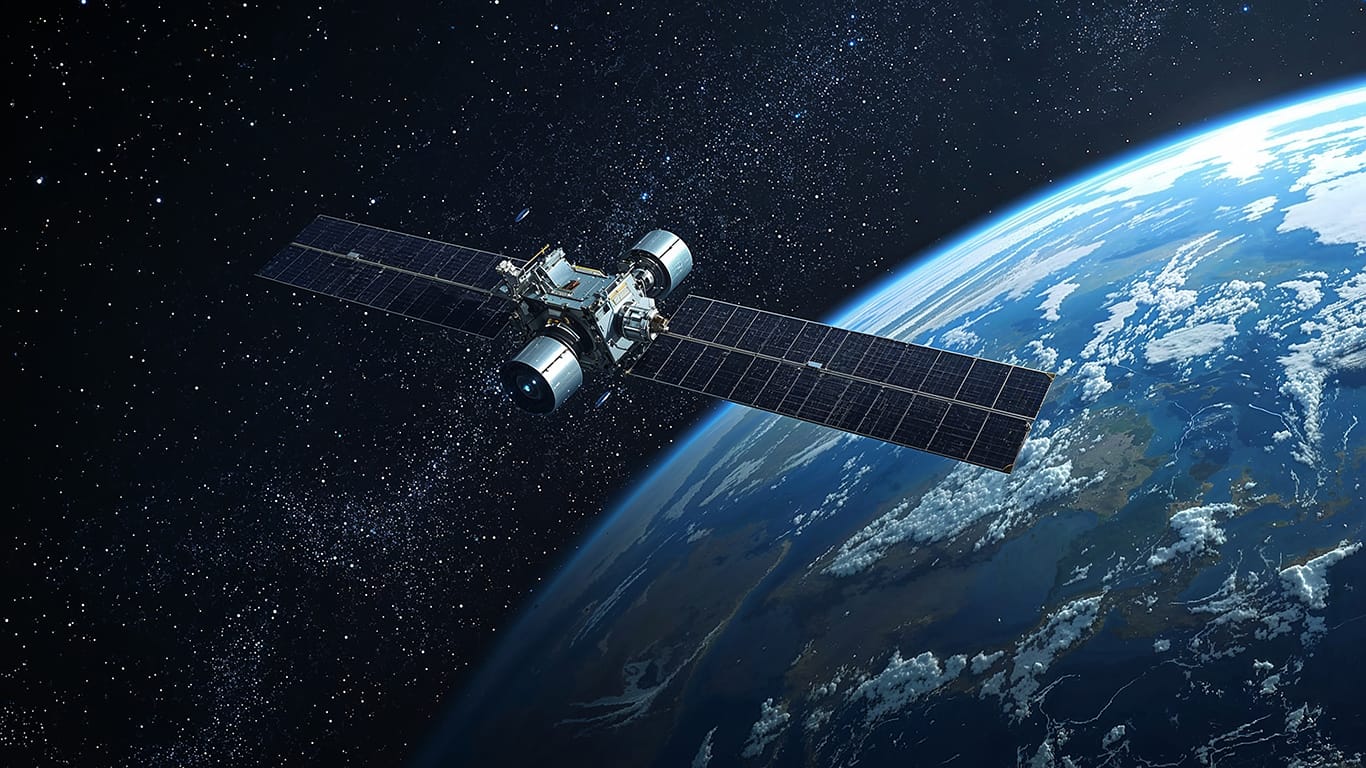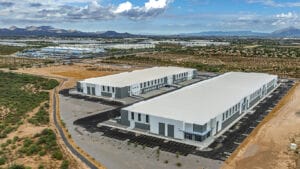Following the conclusion of World War II, the U.S. government began shuttering military installations across the country, including the Yuma Army Airfield. Wanting to show that Yuma’s sunny weather could still be an asset to the military, two veterans embarked on a mission in 1949 where they flew for 46 consecutive days. Their gambit became international news and kept the airfield open. Today, communities across Southern Arizona are building on a legacy of aerospace and defense by once again leaning into the state’s natural advantages.
Doulgas Nicholls, mayor of the City of Yuma, intends to do so by creating a spaceport within the municipality. When the Arizona Space Commission was reinvigorated earlier this year, Nicholls was appointed by Gov. Katie Hobbs to help define the strategy for further developing the state’s aerospace industry.
“Globally, aerospace is projected to be a $732 billion industry by 2030,” Nicholls says during AAED’s Southern Summit. “Satellite launches are growing by 20% year-over-year, and there are only 14 commercial space ports in the country, which sounds like a lot, but it’s not nearly enough.”
The focus of Yuma’s spaceport will be on launching smaller communication satellites, which Nicholls says requires far less infrastructure. He estimates the total construction cost will be around $5 million and will meet a growing need in the aerospace sector.
“There’s a big backlog of communication satellites that need to get into space, so we wanted to focus on that niche because we can’t accommodate the safety parameters of larger launches,” Nicholls continues.
Part of the spaceport’s purpose, he explains, is to establish an aerospace cluster in the region and state. It also is compatible with the agricultural industry, which makes up around 70% of the region’s economy. Nicholls estimates that if the right steps are taken, aerospace will generate $2 billion in activity over the next two decades.
“This is how you get on the map,” he says. “Launching rockets is what we want to do — it’s not just a gimmick. But we’re also pragmatic and know it won’t be a $1 billion industry by itself, but we do have the manufacturing and logistic capabilities, along with a ready workforce in our Marine Corps Air Station Yuma.”
Aerospace cluster grows
Alex Craig, associate professor for aerospace mechanical engineering at the University of Arizona (U of A), studies high-speed aerodynamics and hypersonics, which are vehicles that travel five or more times the speed of sound. This academic background is relevant to both orbital reentry and a new class of weapons systems that are focused on getting to the target as quickly as possible.
“When I originally took the job at the university, the existing industrial base in [Southern Arizona] was a big draw,” he says. “Raytheon is just down the road, and they are one of the top four companies in [aerospace and defense]. But there’s also a cottage industry of startups and suppliers built around that, so the more critical mass we have here, the better we can improve our defense capabilities.”
Arizona has long had a significant military presence, adds Tony Boone, economic development manager for the City of Sierra Vista, with every service branch represented in that state besides the Space Force. That, along with the U of A’s reputation as a leader in space research, has created a unique ecosystem Boone says can be nurtured over the coming decade.
That’s why the Arizona Commerce Authority established the Arizona Office of Defense Innovation (ODI) in partnership with the Southwest Mission Acceleration Center in July. The ODI is a new public-private partnership that will advance emerging dual-use technology and support the growth of Department of War (DoW) missions within the state.
“If you read the statute,” says Vic Narusis, executive vice president of industry development for the ACA, “there are 10 or so focus areas, but the goal is to bring more missions to the military bases here and increase federal investment. We do that by bringing something unique to the table.”
He points to the years of work that laid the groundwork for TSMC to land in Phoenix. Now, Narusis says the plan is to replicate that success in Southern Arizona for the space and defense sectors, highlighting the distinctive assets of the region.
“If we can tie the existing restricted air spaces together from Yuma all the way to the White Sands, we’ll have the largest in the country,” he continues. “That will put us in the No. 1 spot for unmanned testing, which is a substantial financial commitment from the U.S. government and military.”
LEARN MORE: Here’s how land use patterns are changing in Arizona
Once that restricted airspace is designated, Narusis says companies within the supply chain are likely to locate in Arizona, making it easier to build, test and ultimately launch here.
With the growing importance of satellite communications, having the infrastructure to put them into orbit is paramount. Narusis notes that thousands of satellites will be launched each year by 2030, and the existing sites are out of capacity — a need that he and others are working to meet.
Warning lights
That said, putting any object into orbit and ensuring its safe return is a complex endeavor involving both the public and private sectors, multiple jurisdictions and academia.
“From a local perspective, we’re still dealing with the implications of [the National Environmental Policy Act, or NEPA] despite the fact we’ve been landing unmanned systems at Fort Huachuca since the ‘50s,” Boone says. “The FAA hasn’t made specific standards for a reentry site, so they’re applying the launch site requirements to us. We’re having to wade our way through that.”
Even if all the regulatory stipulations are met, it won’t matter if there aren’t enough qualified people to support the industry. Craig says many of the current professionals are retiring, so recent graduates must be able to make an impact from day one.
“But it’s not just about back filling roles,” he continues. “If we’re going to build new spaceports, we need people who know how to operate in that environment. It’s been a goal of mine to figure out how we do that better, and that’s where partnerships become important.”
Narusis agrees that collaboration is necessary to meet labor demands, adding that the ACA has relationships with the state’s community colleges and Innovate48 workforce accelerators. This diversity of partnerships is crucial because not all jobs within the ecosystem require college degrees.
“Yes, we need engineers, but they only represent about 30% of the roles. It’s the other 70% we really need to focus on,” Narusis continues. “Our community colleges and accelerators have done a great job, but we need to scale up these things now.”
Another aspect of this challenge is that many of the students currently in these programs will have opportunities in the state’s other burgeoning industries, such as semiconductors and battery technology.
“We have to work with other sectors to ensure there’s enough talent to go around — and we need to start yesterday,” Narusis adds.
Beyond educating the next generation, Boone notes that the state has an underutilized resource in the form of retiring military members.
“We can grab these folks mid-career — they can retire from the military at 38 years old and still work for another two decades or more,” he continues. “There’s a gap there from a state perspective.”
Despite the challenges, Narusis is sure of one thing: “The future of defense innovation and space is Southern Arizona,” he concludes. “It’s not going to happen overnight, but that’s what we’re setting out to accomplish.”




